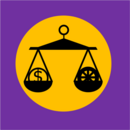Nynorsk Ostlijord
Kingdom of Nyorsk Ostlijord Konungdæmið of Nynorsk Ostlijord | |
|---|---|
| Motto: "Þungir steinar óttast ekkert veður" Heavy Stones Fear No Weather | |
| Capital and | |
| Official languages | Nyorsk |
| Recognised regional languages | Valkean Caledonian Sámi |
| Government | Unitary parliamentary constitutional monarchy |
• Monarch | Sven Erikson |
• Prime Minister | Halla Brynjólfsdóttir |
| Legislature | Alþingishúsið |
| Establishment | |
• Nyjordnábók | 926 AD |
• First Parliament | 1502 AD |
• Nynorsk & Ostlijord Union | 1892 |
| Area | |
• | 603,628 km2 (233,062 sq mi) |
| Population | |
• 2020 estimate | 5,250,412 |
• 2015 census | 5,020,310 |
| GDP (PPP) | 2020 estimate |
• Total | $563.882 billion |
• Per capita | $52,477 |
| GDP (nominal) | 2020 estimate |
• Total | $528.929 billion |
• Per capita | $50,339 |
| Gini (2020) | 27.6 low |
| HDI (2020) | very high |
| Currency | Nyorsk Ostijord krona (NYK) |
The Kingdom of Nynorsk Ostijord (Nynorsk: Konungdæmið of Nynorsk Ostlijord), commonly refered to as just Nynorsk in English, is an Astyrian country located on the northern reaches of the Lorecian continent. It borders Valkea to the west and Caledonia to the south and east. It has a population of 5.25 Million and an area of 603,628 sq.km (233,062 sq.mi) with over a quarter of which is within the Arctic Circle. The capital as well as the largest city is Magnússon, which has been the seat of power since 1018AD. The surrounding areas in the southeastern parts of the country are home to over two-thirds of the population stretched across the northern shores of Kaldvann Bay. Although parts of the country are arctic tundra, Nynorsk Ostlijord's vast landscape includes mountains, forests, rivers, lakes, glaciers and becomes geologically active with frozen deserts, volcanoes & lava fields.
According to the ancient manuscript Nyjordnábók, a detailed saga of the establishment of the kingdom, in 926AD a nordic chieftain named Magnus Inglóson unified numerous island & coastal chiefdoms against various viking raids & invasions with the establishment of a naval militia & forts occupied by allied clans. Eventually the the clans succeeded in protecting their lands from their enemies and formed the basis for what would become the Konungdæmið of Nynorsk. In the following centuries, additional lands were then seized & other nordic tribesmen emigrated bringing with them serfs of Gaelic or Germanic origin. As the country grew in population & territory, King Magnus IIX established a government in which the people were governed under the Alþingishúsið, or the Parliament House in 1502AD. Following interaction by foreign visitors in the 17th century, explorations by land & sea to other regions of Astyria saw an influx of intellectual, scientific, artistic and cultural treasures in which Nynorsk culture changed dramatically. After more than a century of civil strife & open warfare, the neighboring Konungdæmið of Ostlijord submitted to Nynorsk rule in the mid-19th century. The Nynorsk & Ostlijord Union held later in 1892 united the kingdoms officially before frequent trade interactions with Astyrian nations began in the early 20th century forever transforming the countries. Although the Nynorsk Royal family introduced Lutheranism forcefully in Magnússon & other large towns during the mid-19th century, many smaller communities saw no changes in their institutions while more distant territories remained true to native arctic beliefs.
Until the first half of the 20th century, Nynorsk Ostlijord was among the poorest nations in all of Astyria, with a majority of the country relying on hunting, subsistence fishing or basic agriculture in forbidding conditions with no assistance from a strategically weak central government. Industrialization of the fisheries brought prosperity and future discovery of minerals, natural gas & oil helped it become one of the wealthiest & developed nations in the region by the turn of the millennium in thanks to foreign investment.
Nyorsk functions as a parliamentary constitutional monarchy, with its legislative power vested on the unicameral Parliament House or Alþingishúsið. Since 1997, the country is a member of the Lorecian Community, which has enabled the country to expand its markets and further diversify the economy into sectors such as finance, biotechnology & manufacturing all while ensuring economic cooperation & tourism with its Lorecian partners. With a small population compared to its two neighbours, Nynorsk Ostlijord has a strong and developed market economy that keeps relatively low taxes. They maintain a Nordic social welfare system that provides universal health care & education for its citizens ranking the nation high in economic, political & social stability.
History
Geography
Politics and government
Administrative divisions
Foreign relations
Armed Forces
Economy
Transport
Energy
Demographics
Education
Religion
Largest settlements
Healthcare
Culture



